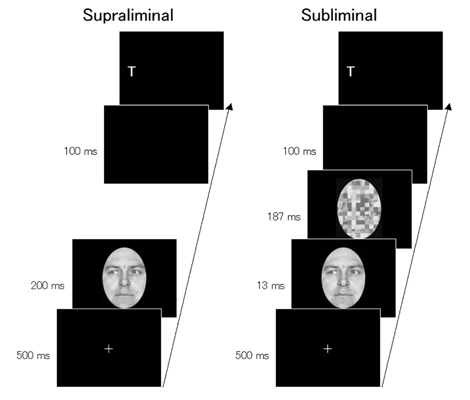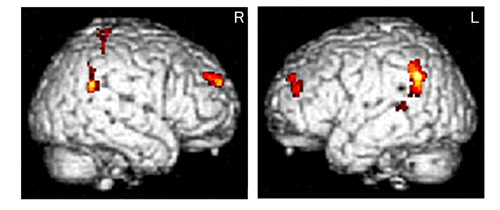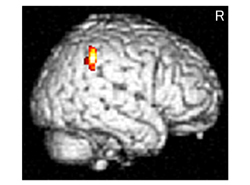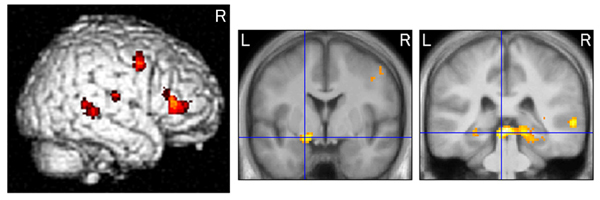SATO Wataru Laboratory
Neural mechanisms underlying conscious and unconscious attentional shifts triggered by eye gaze
(Sato, Kochiyama, Uono, & Toichi: Neuroimage)
Behavioral studies have shown that eye gaze triggers attentional shifts both with and without conscious awareness.
However, the neural substrates of conscious and unconscious attentional shifts triggered by eye gaze remain unclear.
To investigate this issue, we measured brain activity using event-related functional magnetic resonance imaging while participants observed averted or straight eye-gaze cues presented supraliminally or subliminally in the central visual field and then localized a subsequent target in the peripheral visual field.

Reaction times for localizing the targets were shorter under both supraliminal and subliminal conditions when eye-gaze cues were directionally congruent with the target locations than when they were directionally neutral.
Conjunction analyses revealed that a bilateral cortical network, including the middle temporal gyri, inferior parietal lobules, anterior cingulate cortices, and superior and middle frontal gyri, was activated more in response to averted eyes than to straight eyes under both supraliminal and subliminal conditions.

Interaction analyses revealed that the right inferior parietal lobule was specifically active when participants viewed averted eyes relative to straight eyes under the supraliminal condition.

The bilateral subcortical regions, including the superior colliculus and amygdala, and the middle temporal and inferior frontal gyri in the right hemisphere were activated in response to averted versus straight eyes under the subliminal condition.

These results suggest commonalities and differences in the neural mechanisms underlying conscious and unconscious attentional shifts triggered by eye gaze.
Return to
Recent Research.
Return to
Main Menu.



